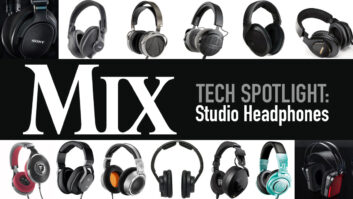Mix takes a deep dive into some of the more recent updates and announcements in the personal audio interface world.

APOGEE BOOM
In July 2022, Apogee Electronics introduced Boom, a new entry-level audio interface aimed at content creators, streamers and the like. The 2×2 USB-C audio interface for macOS, iOS and Windows offers 24-bit/192kHz resolution and includes some of the company’s DSP efforts. Boom offers “professional-spec” AD/DA conversion components with a maximum input level of +18 dBu. The onboard mic preamps offer 62 dB of gain, and the unit includes built-in hardware DSP with Symphony ECS Channel strip. The unit sports a 1⁄4-inch instrument/ line input and a balanced mic/line/instrument Combi input, while onboard outputs include a 1⁄4-inch Zero ohm Headphone output and Left/ Right 1⁄4-inch balanced speaker outputs. The bus-powered unit can connect directly to an iPad Pro and be controlled by the Apogee Control 2 app, which is included.
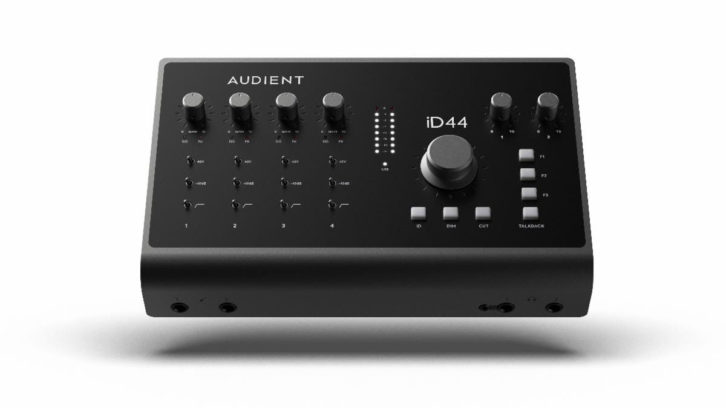
AUDIENT ID44 MKII AUDIO INTERFACE
Audient has updated its iD44 desktop audio interface with the launch of iD44 MKII. The new unit is said to provide better AD/DA converters with a 9 dB improvement. The iD44 MKII now also offers Audio Loop-back, so users have the ability to capture playback from multiple applications on the computer at the same time as the microphones, catering to a crucial need for content creators, podcasters and streamers. The incorporation of a dual-headphone amp, including both a 1⁄4-inch jack and a mini-jack, means three sets of headphones can be plugged in at once.
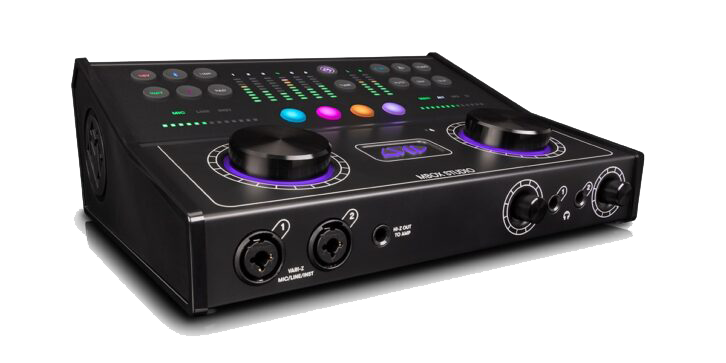
AVID MBOX STUDIO
At the October AES Show, Avid brought back its MBox desktop audio interface with the new MBOX Studio, powered by Pro Tools software. MBox Studio operates on both Mac and Windows OS and includes a bundled Pro Tools Studio subscription (one year). The 21-in/22-out device can connect mics, instruments, studio monitors, Bluetooth devices, and other analog, digital and MIDI gear. MBox Studio relies on the same mic preamps found in Avid’s S6L and Pro Tools Carbon system. Free with the purchase of MBOX Studio are one-year subscriptions for Pro Tools Studio and Avid Sibelius music notation software, in addition to the bundled MBox Ignition Pack. With variable Z impedance switching on instrument inputs, users can change guitar tones while recording to complement the effects chain.
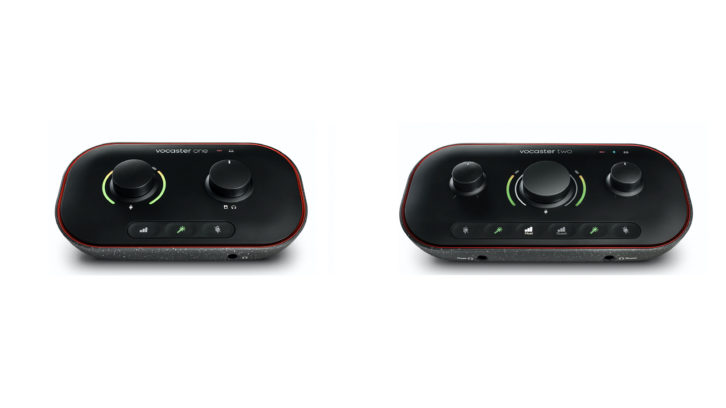
FOCUSRITE VOCASTER
Focusrite is out to court podcasters and content creators with its new Vocaster audio interfaces. Vocaster One is a straightforward interface, intended for the solo podcaster, while the Two is designed for shows that feature two hosts, guests and/or audio segments. Accordingly, it features two mic inputs and two headphone outputs for recording and listening back.
With Vocaster Hub, the companion app, users can control interface settings, set levels, route audio from a phone and computer, and more. Features include Auto Gain for setting levels; Enhance, a set of three voice presets; a Mute button; and Loopback, which allows users to stream pre-recorded segments directly from a computer. Vocaster One Studio includes the One interface; Focusrite’s DM1 dynamic mic with built-in grille and pop filter; and HP60v closed-back studio headphones. Vocaster Two Studio includes the Two interface; a DM14v dynamic mic with built-in windshield and shock mount; and the HP60v closed-back studio headphones.
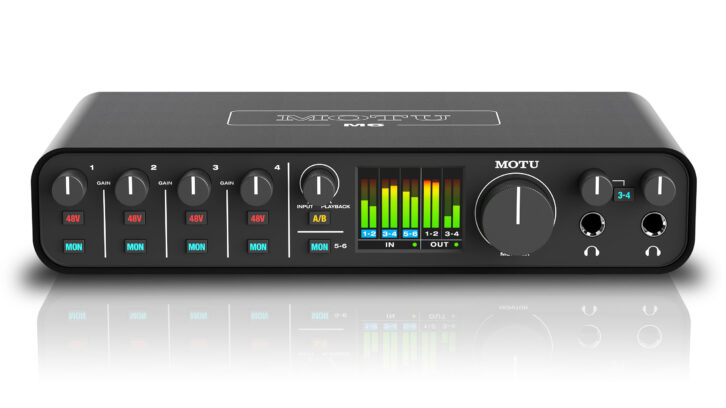
MOTU M6 AUDIO INTERFACE
The compact M6 USB-C audio interface from MOTU is compatible with Mac, Windows and iOS systems and supports up to 192 kHz sampling rates. It features four mic/line/Hi-Z inputs and two pairs of balanced 1/4-inch outputs. The M6, which joins an M Series line that includes the smaller M2 and M4 units, features ESS Sabre32 Ultra converters and provides a 120 dB dynamic range. In addition, M6 users will experience as little as 2.5 ms of round-trip latency (at 96 kHz with a 32-sample buffer), according to MOTU.
The front-panel input channels each have an XLR/1/4-inch Combo input, Gain control, switchable 48V phantom power, and a Monitor mode switch. The back panel includes two additional 1/4-inch line inputs, which can handle balanced or unbalanced signals. Full-color LCD meters show each individual input and output. The M6 also features a pair of independent TRS headphone outputs, each with its own volume control.
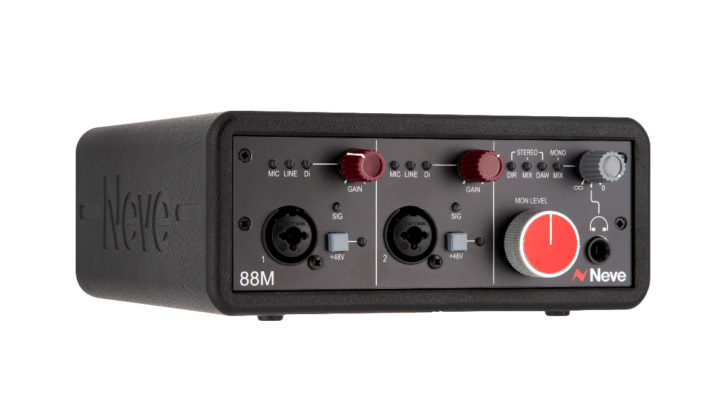
NEVE 88M DUAL MIC PREAMP & USB INTERFACE
Neve launched the 88M, its first Dual Mic Preamp and USB Audio Interface, at the NAMM show in early June. Using the same transformer-balanced technology as Neve’s flagship large-format 88RS, the 88M is intended to bring sound of AIR, Abbey Road and Capitol Studios into home and portable studio setups. The front-end recording system, with plug-and-play connectivity, is complemented with mastering-grade AD/DA conversion. Analog and digital components are incorporated at every stage throughout the entire signal path.
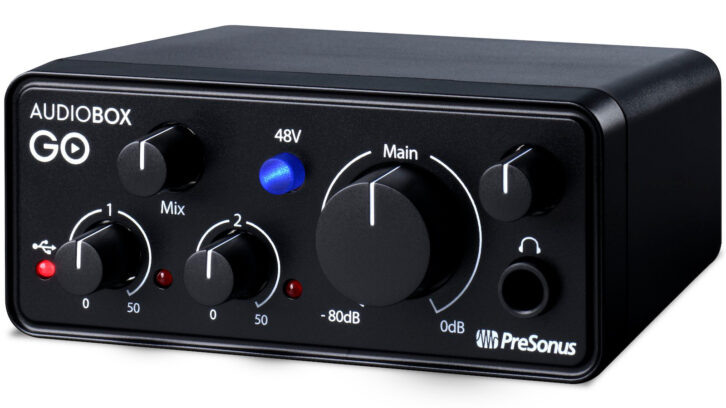
PRESONUS AUDIOBOX GO
AudioBox Go from PreSonus is USB-bus-powered with Mac and Windows computers, iOS phones and tablets, and many Android devices. It’s also USB-class-compliant and supports up to 24-bit 96kHz audio. Though AudioBox Go is a 2-in/2-out interface, it has only one mic input, which is on an XLR/1/4-inch mic/line combo jack with switchable phantom power. The second input is 1⁄4-inch instrument. For outputs, the unit features a pair of TRS balanced outs for feeding monitors and a 1⁄4-inch TRS headphone out. The front panel sports input gain knobs for channels 1 and 2, and the unit features a Mix knob that lets users dial in the ratio of audio returning from a DAW and the direct signal being recorded. The front panel houses a large knob for controlling the level of the main outputs and a smaller one for the headphone volume.
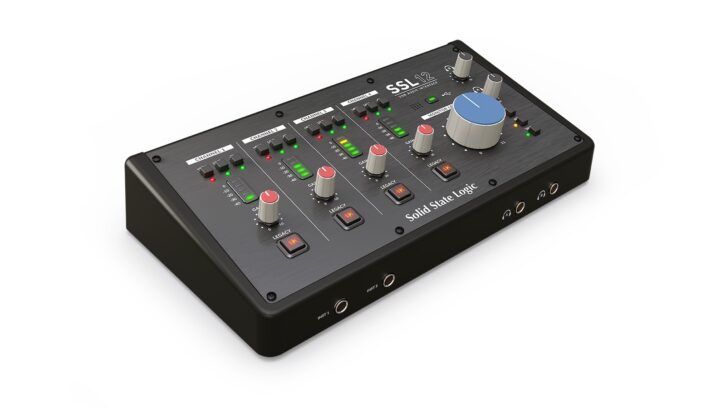
SOLID STATE LOGIC SSL 12
The SSL 12, a 12-in 8-out USB bus-powered audio interface, expands on the original SSL 2 and SSL 2+ models with: four SSL-designed mic preamplifiers (-130.5 dBu EIN performance and 62 dB gain range); Hi-Z instrument inputs for guitars, bass or vintage instruments; two headphone outputs; and next-generation 32-bit /192 kHz AD/DA converters Advanced routing and monitoring options, combined with ADAT input supporting eight additional channels of digital audio, offer a total of 12 tracks of simultaneous recording and eight channels of playback.
The package includes SSL’s 360° software mixer, Alternative Monitor Switching, Mono Sum, Invert Phase Left, Dim, Cut, as well as access to an onboard talkback microphone. Creating up to four independent, near-zero-latency foldback mixes is possible. SSL 12 also includes the SSL Production Pack, a suite of software instruments, sounds, plug-ins and DAW that includes the Vocalstrip and Drumstrip 2 plug-ins as well as 3-month access to SSL’s Complete subscription.
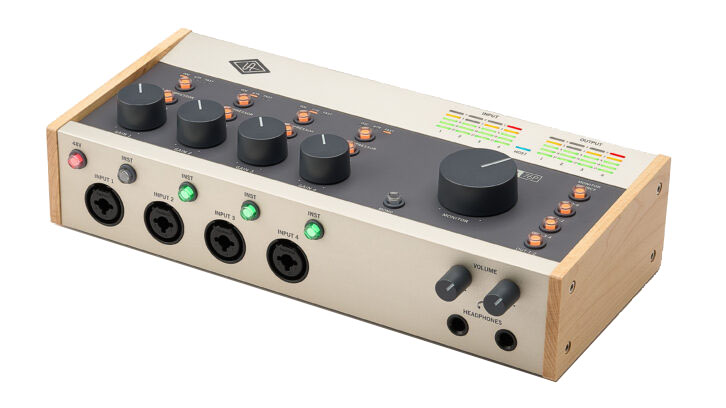
UNIVERSAL AUDIO VOLT SERIES
The new Volt range represents Universal Audio’s first foray into native audio interfaces, with USB-C, tabletop-style devices designed for personal recording, podcasts and other low-input-count applications. The basic Volt models, the 1×2 Volt 1 and 2×2 Volt 2, come with built-in Vintage Mic Preamp mode, which provides a switchable emulation of the Universal Audio 610 mic pre. The Volt 176 and 276 also include 1176-style compressors on their inputs. The 4×4 Volt 476 features two mic preamps and two line inputs, while the 4×4 Volt 476P (Mac/ Windows/iOS) is the only Volt so far with four mic preamps. It also has four XLR/TRS combo jacks to handle mic, line or instrument-level signals, to go with a pair of 1/4-inch TRS headphone outputs, each with its own volume control. The back panel contains six 1/4-inch outputs—Monitor L and R, and four line outputs—as well as the USB-C port for connecting to your computer, a power jack for the included adapter, and a large Off/On switch.







